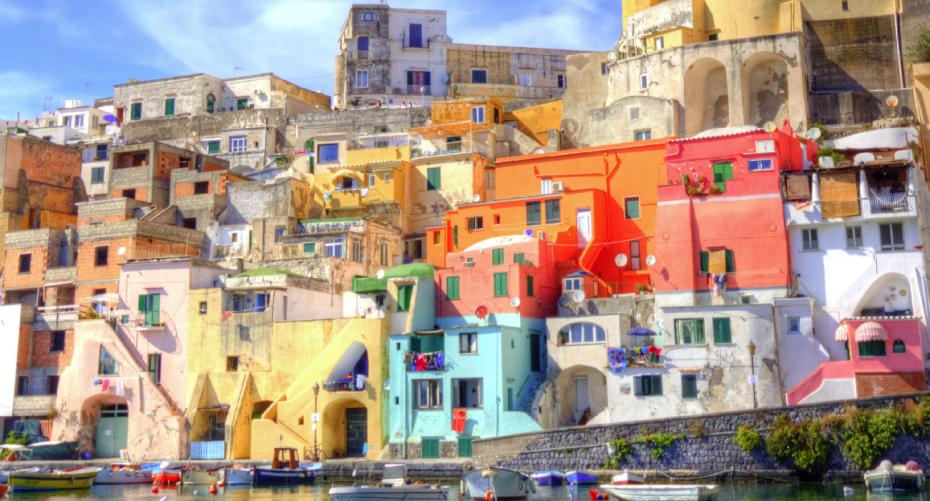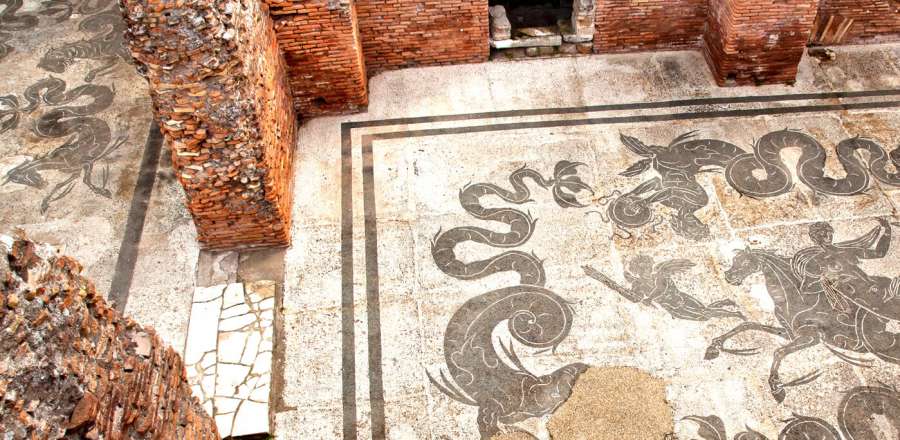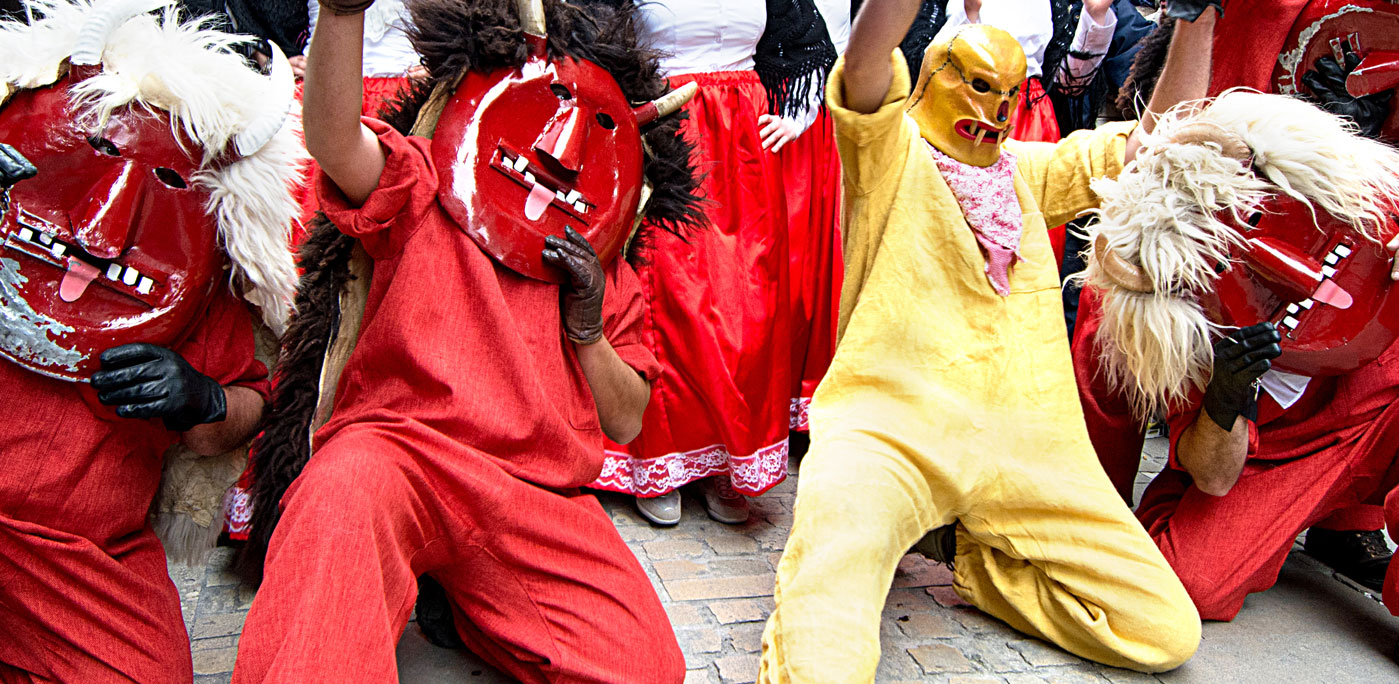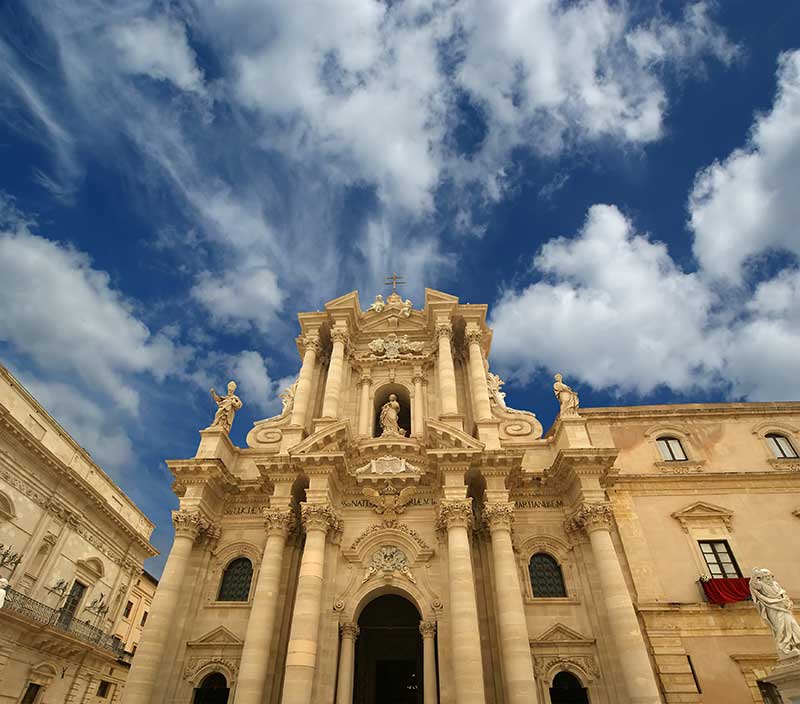Forget Capri and Ischia. There is another island in the Gulf of Naples that’s a prettier and more authentically natural beauty just minutes away by boat. The ancient Greeks loved it. As did the patrician classes of the Roman Empire. You might even recognise it from Il Postino or The Talented Mr Ripley. But if you haven’t been yet, add Procida to your travel wish list!
Pastel-painted cottages line the coastline, tumbling down to the waterfront where fishing boats sell the morning’s catch straight from the deck. Narrow lanes that have barely changed since the middle ages criss-cross the little island between crescent bays, sandy coves and craggy clifftops. And lemon-trees dot the land with their citrus perfume. Add in the fact that it’s only an hour from Naples, nestled in between Ischia and the mainland and crucially almost untouched by commercialism and you have a truly perfect holiday hideaway.

But Procida’s magic extends much further back than its seafood tavernas, beautiful vistas and sun-drenched charm might suggest. This is an island wrapped up in Greek myth, entangled in Roman legend and steeped in feudal history.
The first Greek settlers arrived around 1600 BC. They nicknamed the archipelago the “islands of monkeys” after a story from mythology. And believed that Mimas, a legendary giant killed by red hot missiles during a cosmic battle with the gods, was buried under Procida or Prochyta in Greek.
Next the Romans arrived, claiming the island and again invoking stories of gods and giants to explain the craggy appearance. But instead of Zeus, the Romans believed that Jupiter, the father of the gods, created the island when he threw a boulder into the sea during his fight with the giants. Patrician Romans looking for a beautiful seaside getaway loved it.
The island continued to pass between different hands throughout the centuries. From the Normans to the Sicillians to the French its people endured countless changes, even taking refuge in the fortified castle on occasion. Pirates also attacked and one legend tells of desperate locals calling on St Michael the archangel for help.
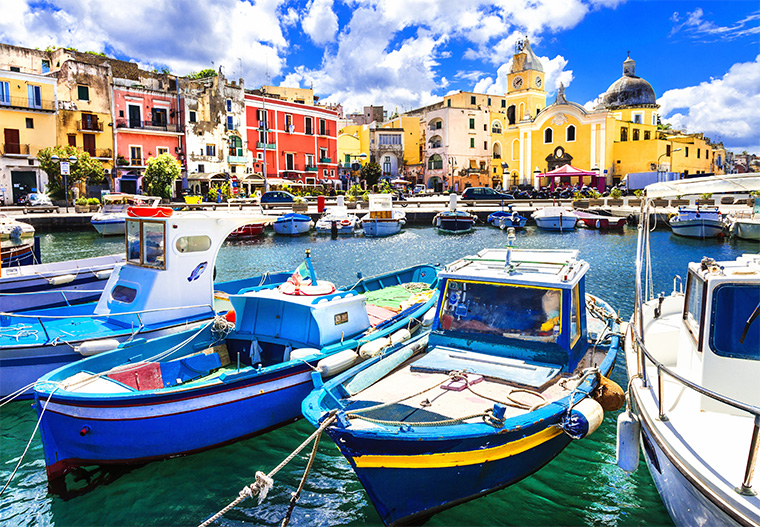
Luckily the saint appeared armed with his sword, ready to take on the marauders who fled. And the islanders have celebrated their redemption with a procession for St Michael on the 8th May every year since. Procida is also famous as having one of the oldest Good Friday processions in Italy, when hooded locals faithfully carry wooden statues through the streets accompanied by a slow, solemn, ominous beat of a drum.
But what the Greeks and Romans and many generations after them sought to explain with myth and folklore we can now attribute to the island’s fiery volcanic history. Procida’s semicircular bays, coves and caves are the remnants of four volcanic craters that have been eroded by the sea rather than godly battles. And luckily for us the island now lies dormant so we need not appease gods or underwater giants; seaside life ticks along to a much more tranquil tempo.
In fact what geology and nature created is a naturally beautiful, authentically Italian island. And despite being just 1.5 miles square, modern Procida has lots of little delights for the visitor.
From the northern ferry port it’s a short walk to the old waterfront of Marina Grande, scattered with the nets and paraphernalia of a functioning fishing village. Quayside trattorias and bars offer tasty refreshments, without breaking the bank. And then its time to start exploring; the best way is on foot as the narrow streets lend themselves much better to pedestrians than cars.
Turning east from the harbor, you can lose yourself in the multicolored Terra Murata walled medieval town, perched on a hill overlooking the bay. Key attractions include the 15th century Palazzo D’Avalos, that’s served as a defensive castle, military school and prison over the years, and the 11th century Abbazia di San Michele.
Continuing clockwise it’s a short stroll down to Procida’s most picturesque village, Corricella, tucked cozily into one of the island’s old craters. It’s an absolutely gorgeous vision of pastel paintbox hues, so the fishermen can identify their flat-roofed homes from the sea, and probably the most photogenic spot on the island. Think Positano or Portofino with more character and without the designer shops, tour groups or steep hills!
Meanwhile, carrying on round the coast you come to the southern beaches and steep volcanic cliffs where Il Postino was filmed in 1993-4. Alternatively, cross the narrow waist of the island to the sandy beaches of the west coast known only to savvy Italians. Or why not wander the lanes, stopping to admire the lemon-inspired cuisine. Recipes, including lemon salad infused with chilli oil, are made from the local limoni pane or pithy, sweet bread lemons grown all over the island. Delicious!
Ultimately, Procida is a quintessentially Mediterranean paradise; colorful, natural and genuinely unspoilt. Visitors merge in easily, strolling past fishermen repairing their nets or old men gossiping in the little piazzas. And life continues with ancient processions, cliff top views and rainbow-lined lanes that haven’t changed in centuries. If you’re visiting Naples make sure to add Procida to your list, you won’t be disappointed!
